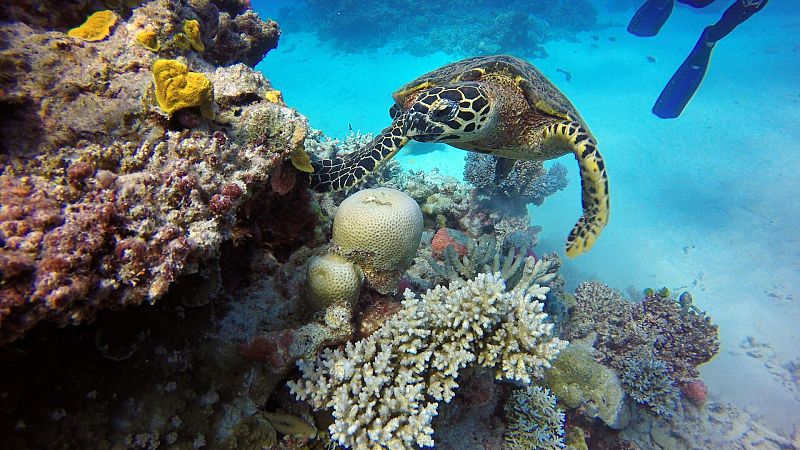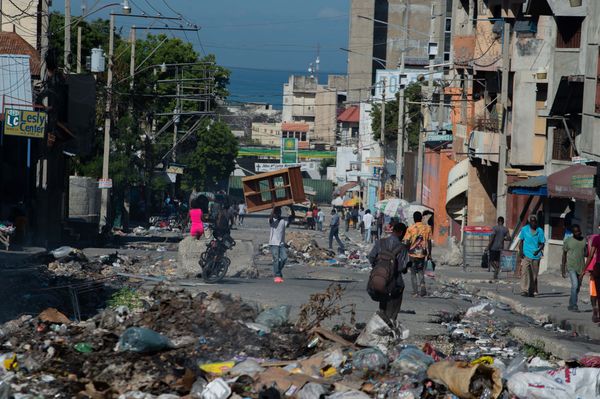
The Great Barrier Reef could be in trouble. Again.
Parts of Australia’s iconic reef have just suffered their worst annual decline since records began almost 40 years ago. After years of recovery, back-to-back climate stressors have driven a sharp drop in coral cover – the percentage of a reef’s surface covered in live coral – across its three regions.
A new report from the Australian Institute of Marine Science (AIMS), which has surveyed the reef annually since 1986, shows that 2024’s mass bleaching event, followed by two cyclones and freshwater flooding, caused a region-wide decline.
Nearly half of the 124 reefs surveyed showed losses – some lost up to 70 per cent of their coral cover.
After several years of relatively strong coral recovery in some parts of the reef, these steep declines are especially stark.
“The quick reversal of recent coral recovery appears part of an emerging trend,” Dr Mike Emslie, who leads AIMS’ Long-Term Monitoring Program, said in a statement.
“Previously, coral cover fluctuated in response to disturbances, but over the last 15 years, these fluctuations have become larger, swinging from record lows to record highs. This trend is being driven primarily by more frequent heat stress brought about by climate change.”
North, central and south all hit hard
Every region of the reef saw a substantial drop in coral cover compared to 2024 levels in this year’s survey.
In the northern reef, from Cape York to Cooktown, coral cover declined from 39.8 per cent to 30.0 per cent. That’s almost a 25 per cent loss – the largest single-year decline ever recorded for the region. Still, cover remains slightly above the long-term average.
In the central reef, from Cooktown to Proserpine, coral cover declined 13.9 per cent. Most of the reefs that maintained or gained coral cover in 2025 were found in this region.
But the southern reef, from Proserpine to Gladstone, was hit hardest. Coral cover fell 30.6 per cent to about 26 per cent – the largest annual decline since monitoring began.
“This is also the first time we’ve seen substantial bleaching impacts in the southern region,” said Emslie.
The declines were not uniform, but they were widespread. Nearly half of the surveyed reefs lost coral cover while just 10 per cent showed an increase.
Heat stress is fuelling a global bleaching crisis
The 2024 bleaching event is part of a broader global crisis. Beginning in the Northern Hemisphere in 2023, it was officially declared the fourth global bleaching event by the US National Oceanic and Atmospheric Administration (NOAA) last year.
According to the NOAA, more than 84 per cent of the world’s reefs have been exposed to heat stress severe enough to cause bleaching in the past 12 months. The sheer scale of the event makes it the most extensive on record.
As oceans absorb more heat due to climate change, marine heatwaves have become longer and more intense. When corals overheat, they release the algae that give them their colour and nutrients. If the conditions persist, the corals can starve and die.
Scientists say these mass events are no longer rare, and that the recovery periods between them are shrinking dangerously.
A brief window of resilience is closing
While the survey authors said the Great Barrier Reef still retains more live coral than many other reef systems around the world, that may offer little comfort.
The reef’s ability to recover after past bleaching events was largely thanks to favourable conditions and the dominance of fast-growing coral species, like Acropora. But those same species are also the most vulnerable to repeat bleaching.
The summer of 2024 also brought a cavalcade of other stressors: Cyclones Jasper and Kirrily, major flooding from rainfall and runoff and outbreaks of crown-of-thorns starfish – voracious predators that can wreak havoc on corals.
Another bleaching event is already underway in 2025 and its impact will only be visible in next year’s data.
The AIMS marine scientists say the message is clear. “These results provide strong evidence that ocean warming, caused by climate change, continues to drive substantial and rapid impacts to reef coral communities,” said Selina Stead, AIMS CEO.
Without rapid reductions in greenhouse gas emissions and urgent global action to limit ocean warming, she added, the world’s coral reefs – including the Great Barrier Reef – face further fluctuations and uncertainty in the decades to come.







